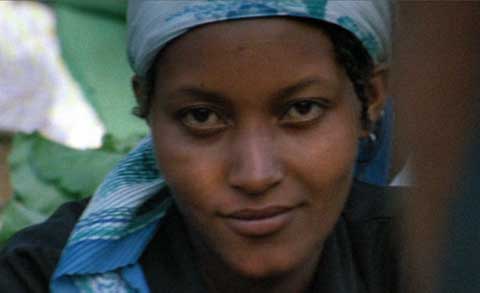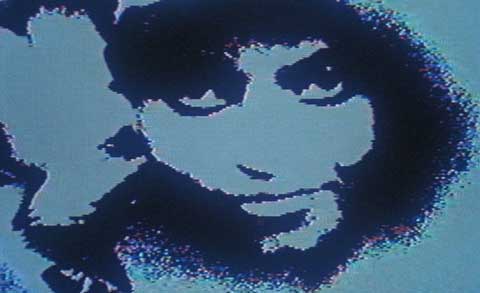After a second viewing, I still needed some help wrapping my brain around the structure of Marker’s Sans Soleil. The following is a summary of useful ideas from Nora Alter’s book, Chris Marker (from Illinois UP’s Contemporary Film Directors series, 2006):
Nearly all of the locations in the film are islands: Japan, Cape Verde, the Isle of Sal, Iceland. Alter sees this as part of Marker’s larger interest in the relationship between space and time, which Krasna, the film’s “author,” identifies as the major preoccupations of the 19th and 20th centuries, respectively. An island is “separated from the mainland and operat[es] according to its own, relatively autonomous flow of time,” Alter writes. (Note: Twenty-five years later, this idea seems almost quaint in our globalized world.)
Like the small Icelandic village where it was shot, the image of happiness that opens the film (the three children) is obliterated by darkness: volcanic ash buries the town, blank leader buries the image. Sans Soleil presumes that manufactured images are likewise burying memory, killing off ritual and history in the process. Krasna asks, “I wonder how people remember things, [people] who don’t film, don’t photograph, don’t tape?”
Krasna’s first instinct upon returning to Tokyo after a twenty-year absence is to “see if everything was where it should be: the Ginza owl, the Shimbashi locomotive.” These landmarks remain, but Japan is a radically different place. Modernization is complete, and society has become totally mediated by technology. Alter points out that both the sights and sounds of the city are seductively micro-managed and offers as an example the strange sequence in which people mourn the death of a panda with curiosity rather than sorrow. “Death has become abstract,” she writes. “By way of contrast, Marker then inserts, without commentary, a graphic and drawn-out film clip depicting the shooting of a giraffe.”
For Alter, the giraffe scene also serves as a transition to the portion of the film that deals with successful revolutions against the Portuguese in the 1970s. Contrary to Krasna’s earlier claim that only “banality still interests him,” Sans Soleil contrasts its images of mediated Japan with a “story about the promise of liberation and its subsequent disappointments.” Which isn’t to say that the revolutions — and our understanding of them — aren’t also mediated. Alter examines Krasna’s fascinating reading of the photo of Luiz Cabral decorating Major Nino, then concludes: “The impermanence of images merely mirrors the impermanence of history. They are constantly shifting, fleeting, being rewritten and re-remembered.”
The most obvious form of technological mediation that we experience in Sans Soleil is “The Zone,” the digitally synthesized images that, in Krasna’s view, are “less deceptive than those you see on television. At least they proclaim themselves to be what they are: images, not the portable and compact form of an already inaccessible reality.” The following shots are among the most memorable:


Alter identifies five distinct uses of The Zone: first is a rethinking of a documented past (protests of the 1960s); second is the development of video games and representation of the burakumin (“They are non-persons. How can they be shown, except as non-images?”); third is the function of memory; fourth is Japan’s recent history (kamikazes); and fifth is a return to and re-remembering of Marker’s own images (like the screen captures above, which are separated by nearly an hour in the film).
